Dupa plasarea solicitării de comandă, in sectiunea Istoric puteti vedea cate solicitări de comandă mai avem de procesat inaintea dumneavoastra
Program de lucru: Luni - Vineri 9:00 - 18:00, pauza 13:00 - 14:00.
Se efectueaza lucrari de mentenanta la site si pot aparea erori. In cazul in care intampinati erori va rugam sa reincercati mai tarziu.
Ridicarea personala este disponibila pentru comenzile achitate in avans. Se pot ridica dupa ce sunt pregatite.
No products
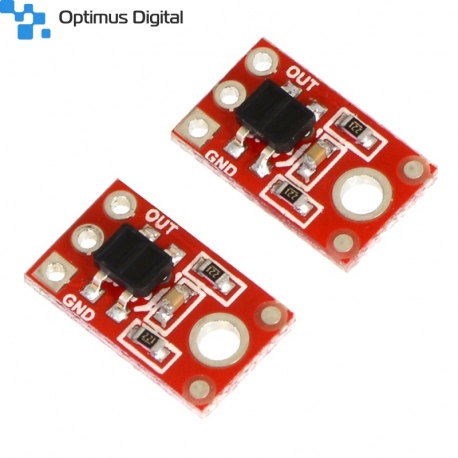 View larger
View larger
QTR-1RC Reflectance Sensor (2-Pack)
0104110000014672
New product
The QTR-1RC reflectance sensor carries a single infrared LED and phototransistor pair in an inexpensive, tiny 0.5" x 0.3" module that can be mounted almost anywhere and is great for edge detection and line following. The output is designed to be measured by a digital I/O line. This sensor is sold in packs of two units.
See description for more details about the product.
Add to cart now!
This product is no longer in stock
- Write a review
- Remove this product from my favorite's list.
- Add this product to my list of favorites.
More info
Description
Note: The QTR-1RC reflectance sensor requires a digital I/O line to take readings. The similar QTR-1A reflectance sensor is available with an analog output.
Functional description
The Pololu QTR-1RC reflectance sensor carries a single infrared (IR) LED and phototransistor pair. To use the sensor, you must first charge the output node by applying a voltage to the OUT pin. You can then read the reflectance by withdrawing that externally applied voltage on the OUT pin and timing how long it takes the output voltage to decay due to the integrated phototransistor. Shorter decay time is an indication of greater reflection. This measurement approach has several advantages, especially when multiple units are used:
• No analog-to-digital converter (ADC) is required
• Improved sensitivity over voltage-divider analog output
• Parallel reading of multiple sensors is possible with most microcontrollers
The LED current-limiting resistor is set to deliver approximately 17 mA to the LED when VIN is 5 V. The current requirement can be met by some microcontroller I/O lines, allowing the sensor to be powered up and down through an I/O line to conserve power.
_1.png)
This sensor was designed to be used with the board parallel to the surface being sensed. Because of its small size, multiple units can easily be arranged to fit various applications such as line sensing and proximity/edge detection.
For a line sensor with eight of these units arranged in a row, please see the QTR-8RC reflectance sensor array; for a similar array of three slightly different sensor components, see the QTR-3RC. For a similar, smaller sensor with longer range, and intended for use with the board perpendicular to the surface, please see the QTR-L-1RC reflectance sensor.
_2.jpg)
QTR sensor size comparison. Top row: QTRX-HD-07, QTR-HD-07; middle row: QTR-3, QTR-1, QTR-L-1; bottom row: QTR-8.
Specifications
• Dimensions: 0.3" x 0.5" x 0.1" (without optional header pins installed)
• Operating voltage: 5.0 V
• Supply current: 17 mA
• Output format: digital I/O-compatible signal that can be read as a timed high pulse
• Optimal sensing distance: 0.125" (3 mm)
• Maximum recommended sensing distance: 0.375" (9.5 mm)
• Weight without header pins: 0.008 oz (0.2 g)
Interfacing the QTR-1RC output to a digital I/O line
Like the Parallax QTI, this sensor requires a digital I/O line capable of driving the output line high and then measuring the time for the output voltage to decay. The typical sequence for reading a sensor is:
1. Set the I/O line to an output and drive it high.
2.Allow at least 10 μs for the sensor output to rise.
3.Make the I/O line an input (high impedance).
4.Measure the time for the voltage to decay by waiting for the I/O line to go low.
These steps can typically be executed in parallel on multiple I/O lines.
_3.png)
QTR-1RC output (yellow) when 1/8" above a black line and microcontroller timing of that output (blue).
With a strong reflectance, the decay time can be as low as several dozen microseconds; with no reflectance, the decay time can be up to a few milliseconds. The exact time of the decay depends on your microcontroller’s I/O line characteristics. Meaningful results can be available within 1 ms in typical cases (i.e. when not trying to measure subtle differences in low-reflectance scenarios), allowing up to 1 kHz sampling.
Our Pololu AVR library provides functions that make it easy to use these sensors with the Orangutan robot controllers. We also have a Arduino library for these sensors.
_4.jpg)
How it works in detail
With only four components (or five, if you count the coupled IR LED and phototransistor separately), the operation of this sensor is relatively basic. The emitter side is just an IR LED with an appropriate current-limiting resistor. The light from the emitter leaves the sensor, reflects off a nearby surface, and returns to the detector.
The detector side is a resistor-capacitor (RC) circuit, where the resistance comes from the phototransistor and is a measure of the incident infrared light, and the decay time is proportional to the resistance. The first step of the sensor-reading process-driving the sensor output high-discharges the integrated 10 nF capacitor and puts both sides at the same voltage (VIN). Alternatively, you can think of this as "charging the output node", and it is functionally equivalent to charging a capacitor with one side connected to ground. Once you are no longer supplying an external voltage to the output pin, the capacitor can slowly charge through the phototransistor, with the rate of charging being a function of the phototransistor’s resistance (which is in turn a function of the incident IR). As the capacitor charges, the voltage on the output side drops, eventually reaching zero when the capacitor is fully charged. Alternatively, you can think of this as "discharging the output node", and it is functionally equivalent to discharging a capacitor with one side connected to ground.
The 220 Ω resistor on the OUT line serves to limit the current flow, making it possible for a microcontroller output to safely charge the output node prior to each reading. It has very little effect on the sensor output.
_5.jpg)
QTR-1RC and QTR-L-1RC reflectance sensor schematic diagram.
_6.png)
QTR-1RC output (yellow) when 1/8" above a white/black interface and microcontroller timing of that output (blue).
Specifications
Dimensions
| Size: | 0.3" x 0.5" x 0.1"1 |
| Weight: | 0.2 g2 |
Notes:
1 Without optional included header pins.
2 For a single sensor without included optional header pins.
Don't delay, buy today.
Add to cart now!
Reviews
Customers who bought this product also bought:
-
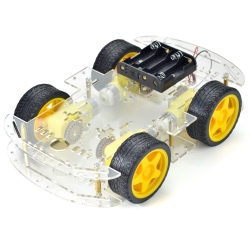
Robot Chasis...
This is a very simple and easy to install 4...
$19.20
-
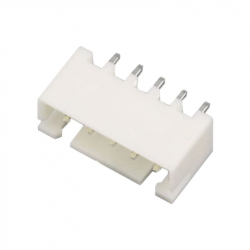
5p Straight...
5p Straight Male XH2.54 Connector
$0.24
-
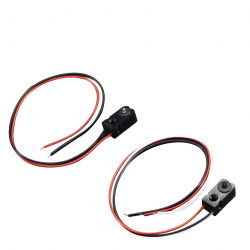
IR Break...
Infrared (IR) break-beam sensors are a simple...
$3.72
-
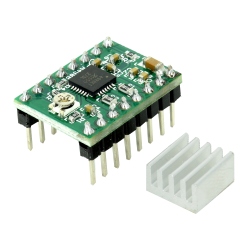
Green A4988...
The A4988 stepper motor driver is ideal for...
$1.92
-
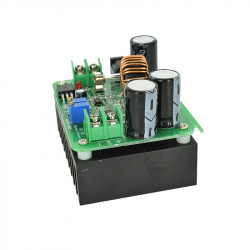
600 W DC-DC...
This 600 W DC-DC boost module is perfect for...
$20.88
-
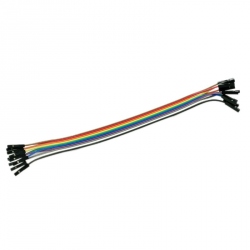
20 cm 10p...
Ideal wires for making connections for...
$0.71
-

NRF24L01 2.4...
This module uses the nRF24L01 integrated...
$2.02
-
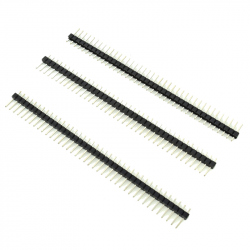
40p 2.54 mm...
This pin header is great for prototyping PCBs....
$0.24
-
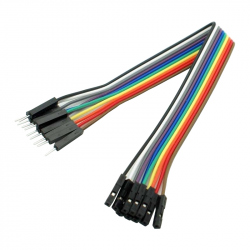
20 cm 10p...
Ideal wires for making connections for...
$0.96
-
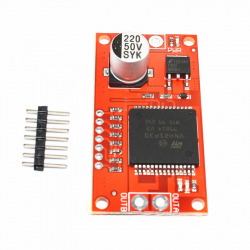
VNH2SP30...
Large power motor driver based on the...
$26.40









